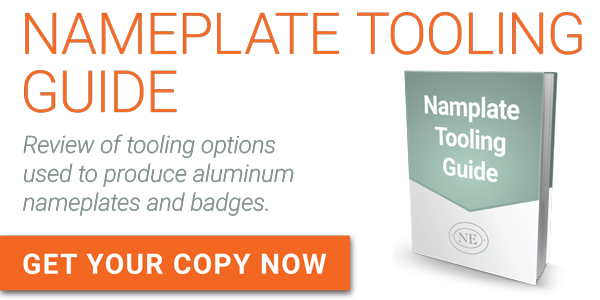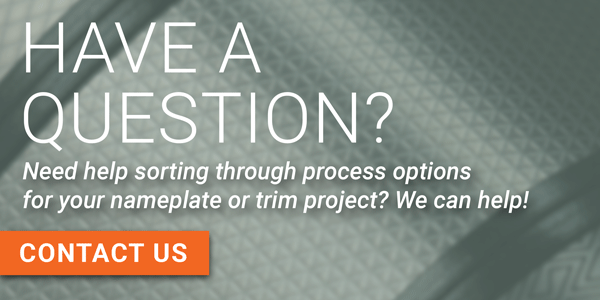One Aluminum Blank Tool Results in Three Different Looks
Designers with multiple models or tier levels for their product can sometimes get overwhelmed with the thought of coming up with a nameplate or badge to differentiate between the various options. It isn't long before the topic of tool cost becomes a point of concern. This rings true if we are talking about a brand new product or adding onto existing product lines. One solution for this is to make use of common tooling operations.

The interior dashboard of the Ford Mustang makes use of common-shaped branding components to identify and differentiate between the models. This is a great example of how to capitalize on the tooling investment and get some really great looks across the product lines.
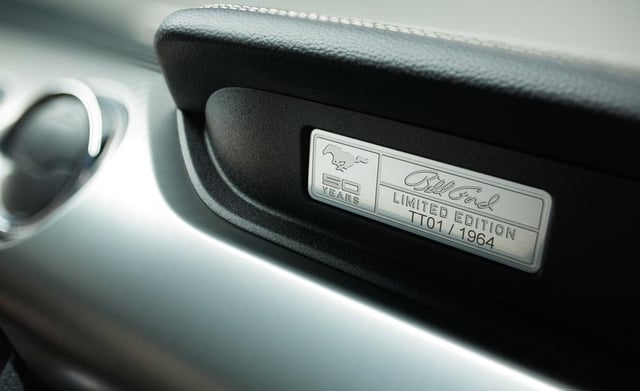
The 50th anniversary aluminum badge uses the stamping, or blank, die to cut the metal into the size and shape needed to fit into the insert of the dashboard. A chemical deep etch process is used to create a two-tone silver finish with the graphics being recessed into the surface of the aluminum.
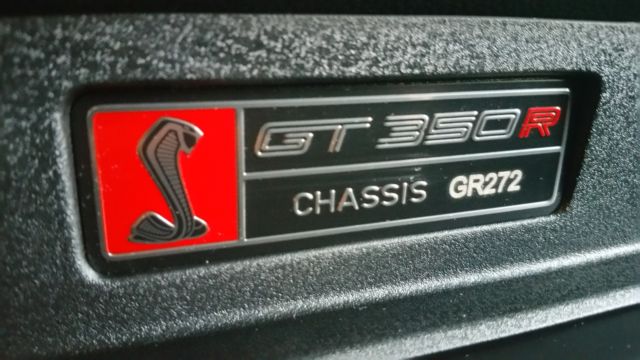
In contrast, the GT 350R aluminum badge takes the common blank die and customizes it with a unique emboss and adds a red color to differentiate it from the GT 350 model. The GT 350 badge incorporates its own custom emboss. Both of these options have crisp raised graphics and text. All three have space to allow for serialization at the plant assembly location.
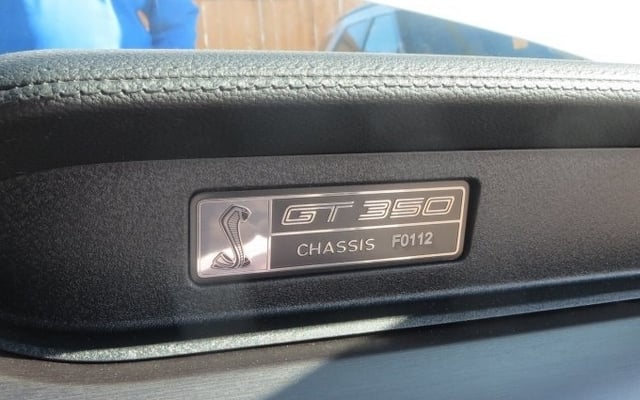
Benefits of using common tooling operations for your aluminum nameplate include:
- Shared cost for tool build investment dollars
- Common attachment carrier to the end product
- One component supplier across product lines
- Consistent branding across product families to build brand awareness
The ability to re-use tooling blank and stamping operations helps your budget by allowing you to spread the investment across projects. Once a tool is built, graphic changes are possible for colors and even text. Customization can be accomplished with decoration or interchangeable emboss dies.
When it comes time to add on to your product line, you do not need to reinvent the wheel for badges and emblems. Instead, review for feasibility to make use of your current tool elements as well as the attachment and assembly method. You will find that you can build brand awareness in the marketplace.
Can we help you with your next nameplate tooling? Let's talk!
Subscribe to Nameplate Blog
- 2021 (1)
- 3D (4)
- Adhesives (11)
- Aluminum (129)
- Aluminum In-mold (9)
- Aluminum Trim (41)
- Anodize (4)
- Appliance (12)
- Appliqué (5)
- Archive (35)
- Artwork Submission (4)
- Assembly (6)
- Automotive (35)
- Backlit (5)
- Boats (6)
- Brass (8)
- Brushed Aluminum (19)
- Carbon Fiber (2)
- Classic (1)
- Coined (5)
- Color Development (25)
- Computers (13)
- Cosmetics (24)
- Custom Patterns (11)
- Customization (16)
- Customized Patterns on Aluminum (2)
- Debossing (13)
- Diamond Cut (22)
- Digital Printing (2)
- ebook (4)
- Electronics (23)
- Embossing (53)
- Etched (20)
- Exterior (9)
- FAQ (29)
- Faux Finish (1)
- Faux Finishes (7)
- Favorite Nameplate (20)
- Furniture (9)
- Gauges (5)
- Gloss (4)
- Hang Tag (1)
- IDSA (1)
- In-mold Decoration (5)
- Individual Letters (7)
- Inlay (1)
- Key Fob (1)
- Labels (10)
- Large Vehicle (4)
- Laser Etch (2)
- Lithography (3)
- Match Box Cover (6)
- Materials and Processes (118)
- Mechanical Finishes (51)
- Medical Equipment (10)
- Metallic (8)
- Motorcycle (11)
- Nameplate (175)
- Nameplate Examples (54)
- Nameplate Tools (7)
- Outdoor Equipment (4)
- Overlay (7)
- Packaging (15)
- Patina Finish (3)
- Plastic (1)
- Plastic Trim (3)
- Point of Purchase (8)
- Polycarbonate (10)
- Process Color (16)
- Promotional Products (38)
- Prototypes (2)
- Recreational Vehicles (6)
- Resources (11)
- Safety Labels (2)
- Selective Patterns (10)
- Sill Plate (6)
- Sports Equipment (9)
- Stainless Steel (17)
- stock dies (10)
- Surfaces (4)
- Sustainability (1)
- Technical (1)
- Telecommunications (9)
- Testing (3)
- Texture (15)
- Top 10 (9)
- Woodgrain (2)

